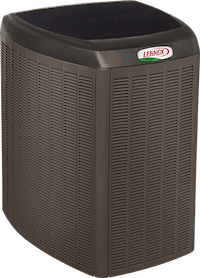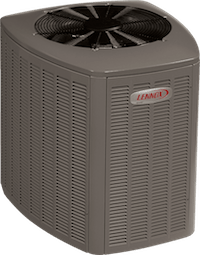Heat Pump vs. Air Conditioner: Which One is Right for Cooling Your Home
Although heat is included in the name, you can use a heat pump for air conditioning. It works by transferring heat instead of making it (furnaces burn fuel to generate heat) which is why it also is used as a dual function appliance. It’s true that heat pumps can be very efficient, but most air conditioners are roughly equivalent in terms of their efficiency. Just examine these two high quality cooling systems from Lennox.


What is SEER and HSPF?
SEER is an efficiency guideline for air conditioning systems, and the higher the number, the better it is. The difference between 23.5 and 26 is not astounding however, and the efficiency varies depending on the model. On the other hand, HSPF is another scale that stands for “heating seasonal performance factor” and is unique to heat pumps. It tells you how efficient the equipment is at heating. You can tell from these examples when comparing efficiency ratings, air conditioners are mostly equal, if not even better depending on the system you choose. The biggest difference between heat pumps and ACs is that heat pumps can also add warmth to your home while an AC only cools.
Does climate matter for heat pumps?
Heat pumps are most effective in warmer climates with less severe winters, save for some integrated systems that use heat pumps as a backup, such as with a geothermal system. You should speak with a licensed HVAC pro who has experience in your city before getting your heart set on a heat pump. If the equipment just isn’t right for your climate, you could have extremely high electric bills. Once the temperature gets too low, it’s difficult for the heat pump to draw heat out of the air and it may never warm your home to the temperature you set. This means you might start running your heat pump non-stop or switching on emergency heat 24/7 during colder months which drives your energy consumption up.
How does a heat pump compare with a furnace?
A furnace is a more robust heating system and is essential for certain chillier climates. That’s because a heat pump has issues when the weather hits about 40 degrees Fahrenheit. As odd as it may sound, during cold weather, a heat pump is designed to extract heat from the outside air and use it to raise the temperature of the inside air. Although it may be too cool outside for comfort, there is still plenty of available heat for the heat pump to work properly, but at exceptionally low temperatures there is not ample heat available outside to heat the air inside to high enough temperatures needed to keep warm. So while a heat pump may be great during the heating season for someone in Tampa, someone living in upstate New York with a heat pump would probably also need a furnace for the more extreme temperatures. If freezing temperatures hit and you don’t have a furnace to take over, a heat pump could run for hours trying to keep your home warm enough.
How to achieve maximum efficiency with your heat pump
In many areas, heat pumps can function with geothermal systems, and the heating source is better for the environment since it is not burning fossil fuels and, instead, uses the Earth’s native temperature to heat and cool. This is a great alternative for particular northern areas, but more land must be available in order to install the correct piping for a geothermal system.
When it comes to home comfort, you probably didn’t need anything else to think about; but, remember, it’s important to examine the pros and cons of each heating and cooling system so you don’t end up installing a system that doesn’t work when extreme temperatures hit, or investing in multiple systems when one would suffice.
If you can’t decide which system would best fit your needs, call Service Experts Heating & Air Conditioning to schedule a no-charge in-home quote. We are available to answer any and all of your questions to help you make the right choice for your home.